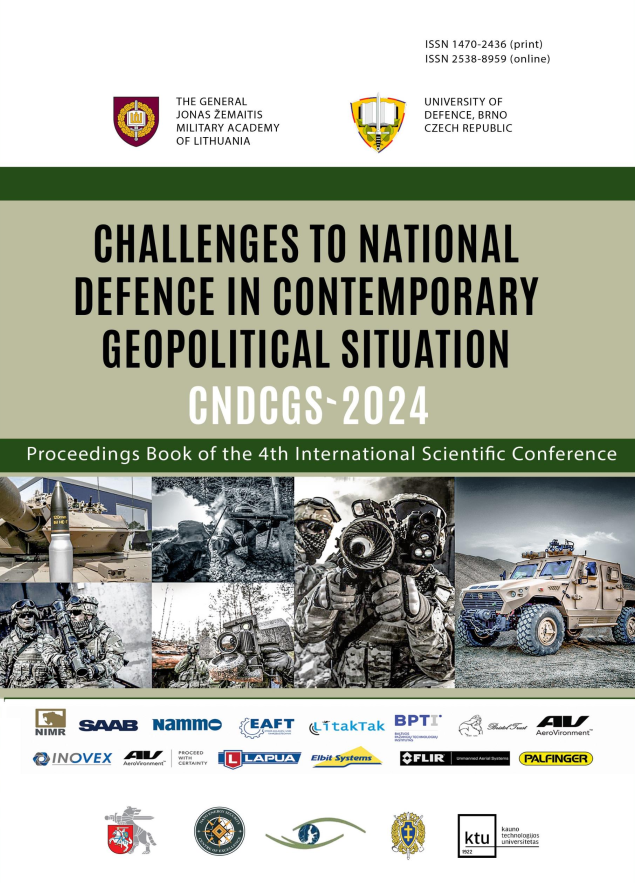Intensity Model and Traffic Quality Assessment of the Selected Section of the D1 Highway
DOI:
https://doi.org/10.3849/cndcgs.2024.428Keywords:
D1 Highway, traffic analysis, military convoy movement, transportation hub, traffic congestion, Mechanized Infantry BrigadeAbstract
This study focuses on analysing the traffic indicators on selected sections of the D1 highway in the direction from Humpolec to Rančířov, with a particular emphasis on the Pávov transportation hub. Data from the nationwide traffic census of 2020 were utilized for calculations, including average daily traffic intensity, average daily load, and transport performance on each section. The capacity of each section was determined and compared to the overall traffic intensity, revealing potential congestion points.
The analysis covers sections 5-8019, 6-8609, 6-1131, 6-1133, 6-1146, 6-1147, and 6-1020, demonstrating a high level of traffic intensity, particularly in terms of heavy motor vehicle traffic volume. The distribution of traffic flow before exit 104 in Větrný Jeníkov into sections 6-1131 and 6-1133 could significantly alleviate temporary traffic congestion.
Considering a Mechanized Infantry Brigade comprising 1 320 vehicles, the calculated convoy length would be approximately 70.562 meters, assuming a simple distance of 50 meters between vehicles. This study provides valuable insights for military convoy movement planning and highlights the importance of considering highway traffic conditions for strategic deployments.
The aim of the article is to propose a commercial solution for securing the onward movement of alliance units based on the analysis of traffic intensity in the selected sector of the D1 highway.
Downloads
Published
Issue
Section
License
Copyright (c) 2024 CNDCGS

This work is licensed under a Creative Commons Attribution-NonCommercial-NoDerivatives 4.0 International License.
All rights preserved. No part of this publication may be reproduced, stored in retrieval system, or
transmitted in any form or by any means, electronic, photocopying, recording or otherwise, without the
permission of the Publisher.





